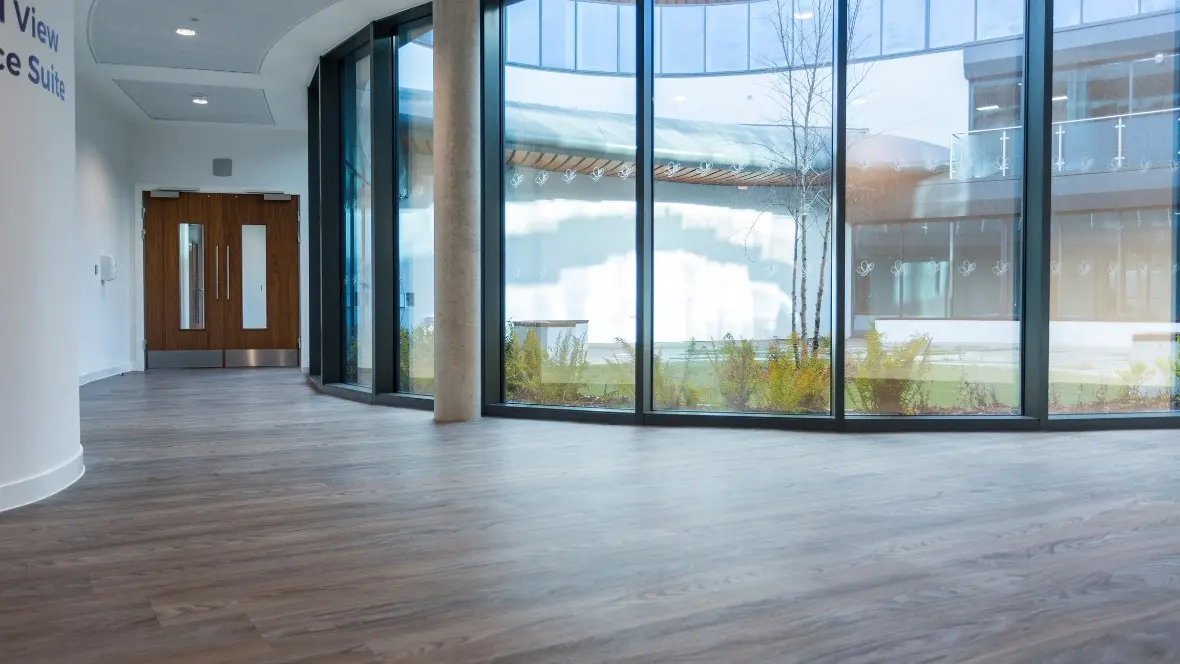Designing For Autism

All answers below have been provided by Karen Wilding, Marketing Communications Manager at Forbo Flooring Systems
How did Forbo become involved in supporting the creation of this guidance?
At Forbo, we understand the importance of good interior design and how it can positively impact end users. However, we also know that it can be quite a complex task to create inclusive environments. As such, in 2017, we partnered with the Dementia Services Development Centre (DSDC) to increase our knowledge on how to create inclusive spaces and to develop a portfolio of flooring solutions suitable for dementia-friendly environments.
Fast forward a couple of years and we heard that the British Standards Institution (BSI) was proposing to develop a new inclusive-design Publicly Available Specification (PAS) guide “Design for the Mind – Neurodiversity and the built environment”– and we knew we had to be involved from the outset. It not only felt like the natural next step, following our work with the DSDC, but we knew that working with the sponsorship companies involved, we could make a difference for people with a wide range of neurocognitive profiles.
.webp)
.webp)
Prior to Forbo’s involvement, did the company have any specific ranges aimed at people with sensory processing differences?
No, Forbo didn’t have any specific ranges aimed at people with sensory processing differences. However, through our work with the DSDC, we have over 1,000 products accredited for use in dementia-inclusive environments. Whilst these products were tested for dementia-friendly spaces, some of the flooring requirements do cross over to what is recommended to create inclusive spaces for people with sensory processing differences, including autistic people. For example, research conducted by the Caudwell International Children’s Centre (CICC) found that when it came
to designing spaces for autistic children, colours and patterns could be a significant source of overstimulation and even anxiety. What’s more, overtly patterned floors can be distracting to walk over and can lead to fixation or even confusion. These are all very similar factors to consider when designing for dementia. As such, some of the solutions in our DSDC approved portfolio would be suitable to consider when designing an inclusive environment.
How will Forbo’s involvement in research further impact on the design of flooring solutions for inclusive environments?
At Forbo, we are consistently looking at ways to expand our portfolio of solutions and when we do so, our design team carefully considers the building design needs through the company’s Dynamics of a Building concept. Our portfolio is always assessed by the DSDC on a regular basis too, to ensure we have a wide selection of solutions available to create inclusive spaces.
.webp)
.webp)
As one of the biggest surfaces in any building, the choice of flooring is a key consideration – particularly when designing environments for neurodivergent people, who may experience sensory hypersensitivity. As such, understanding the role it can play is vital.
When it comes to correctly specifying flooring solutions there are a few factors that need to be considered, such as visual and tactile design and acoustics – to name just a couple. For example, a sudden change in colour, visual contrast and material can become a barrier to some people and so subtle, non-repeating patterns can be crucial in helping users interpret and understand the environment. On the other hand, a carefully considered variation in flooring can allow people to differentiate individual spaces and identify direction of travel, for example in areas which lead off from corridors without introducing a change, may be perceived as a barrier or level change.
Therefore, flooring design can help overcome these cognitive challenges.
With regards to acoustics, noise may be distressing for people with sensory processing differences or with sensory hypersensitivity, so incorporating flooring solutions that can contribute to noise reduction is important. In fact, floor coverings can help in two ways: impact sound reduction (noise generated by traffic contacting the floor surface that is transmitted through the floor to other rooms) and reducing in-room impact noise, both of which can be a distracting stimuli to people who are neurodivergent and experience sensory overload.
What is your advice for specifiers when looking to create patient-centric environments?
When it comes to creating patient-centric environments, there are general guidelines that can be followed to make a building easier for neurodivergent people to use. One of those considerations is the design of floor coverings. For mental health facilities, colours and patterns can provoke a variety of cognitive and emotional responses in patients and the effects of overstimulation can negatively affect their behaviour and coping mechanisms. For example, intense colours or patterns may increase feelings of stress. As such, for people with sensory information processing differences, it is important to keep patterns simple and restrained. However, there is also evidence of underwhelming environment causing issues, so a careful balance should be considered.
Furthermore, recent research suggests that some autistic people will naturally focus on areas of a scene with high-contrast or that are highly colourful . Therefore, the choice of colours and where they are placed can be used to help draw attention to key elements of the building. However, it’s important to note that different colours can evoke different emotional responses. Therefore, carefully specifying the correct choice of flooring can help to create a tranquil and calming environment or promote positive emotions.
What’s more, when designing patient-centric interiors, architects and specifiers need to take a holistic approach.
How do you think products will continue to evolve in the future to better meet the needs of people with autism and other sensory processing differences?
We hope that through the means of guidance such as the BSI’s new PAS, and a wider understanding of neurodiversity as a whole, manufactures of interior finishes and products will be able to develop solutions to help drive the creation of inclusive spaces.
.webp)